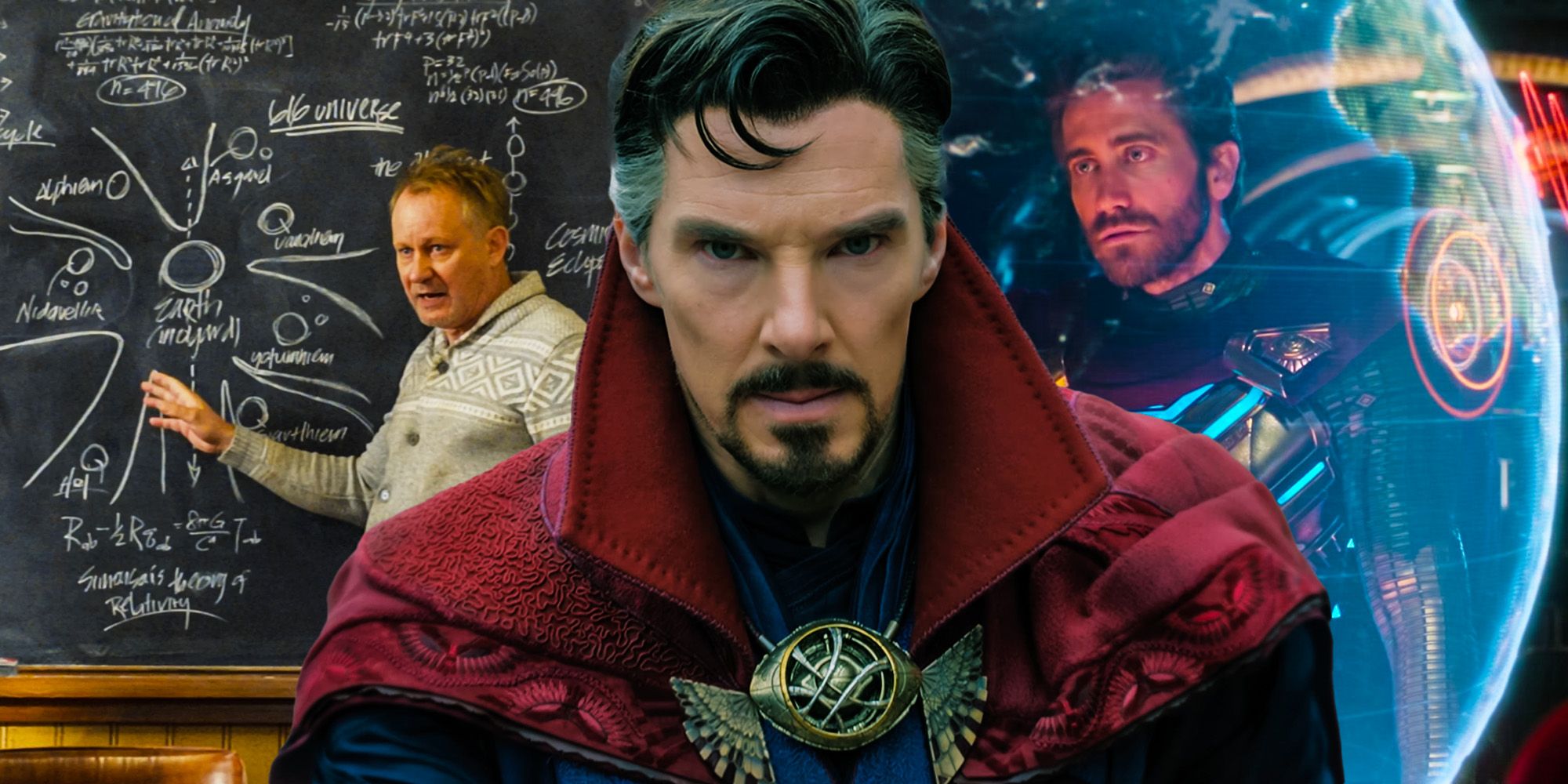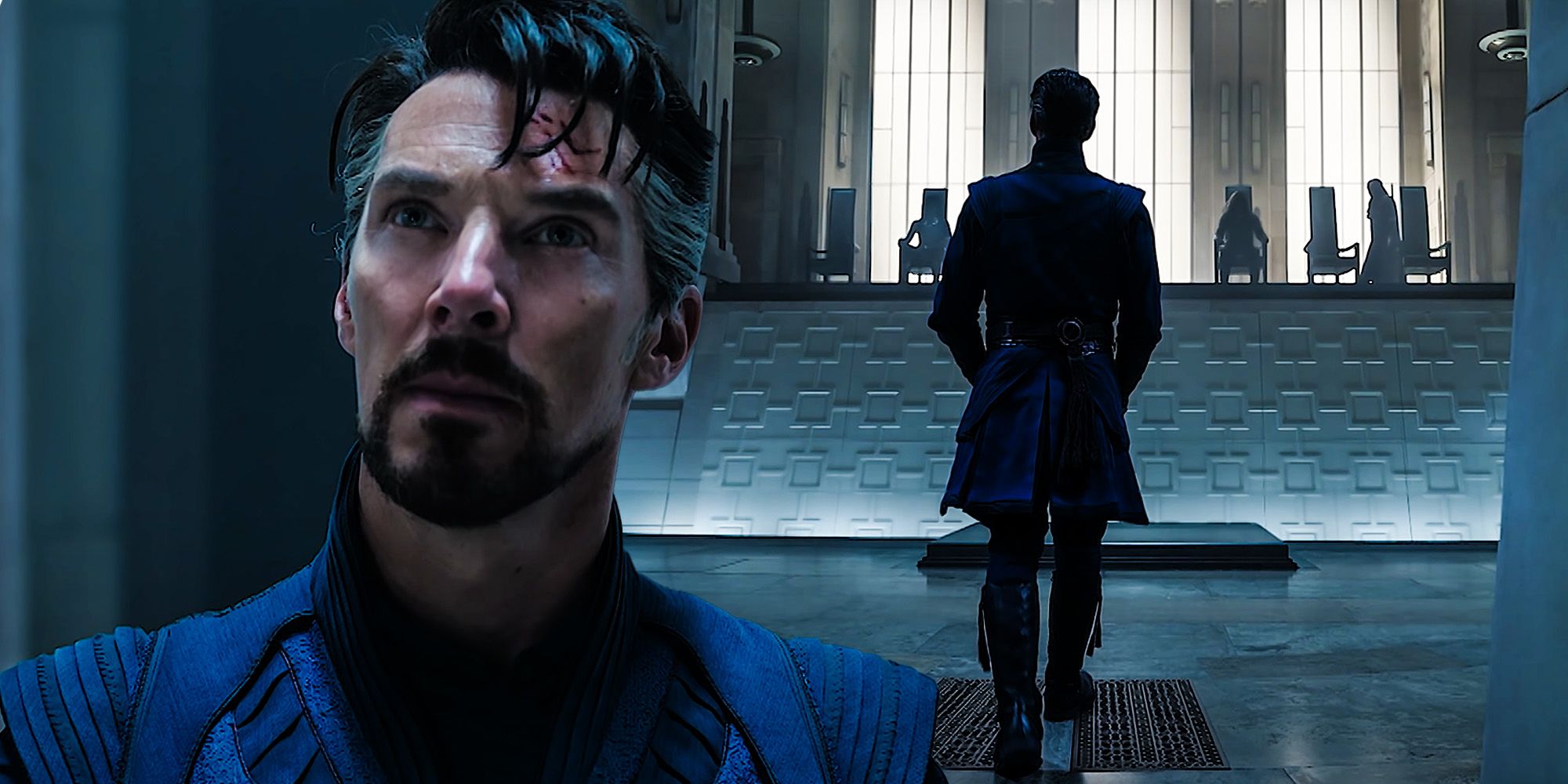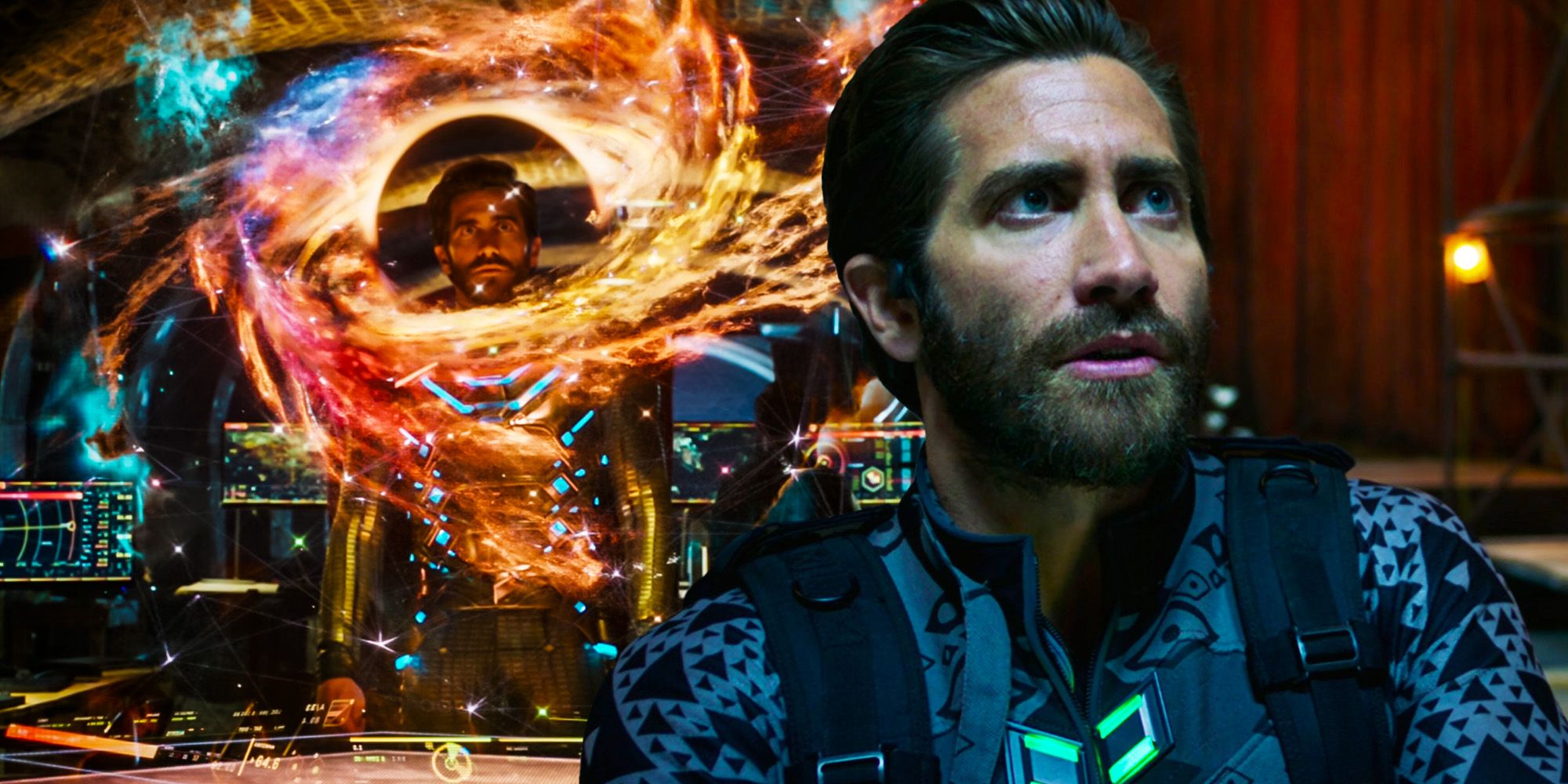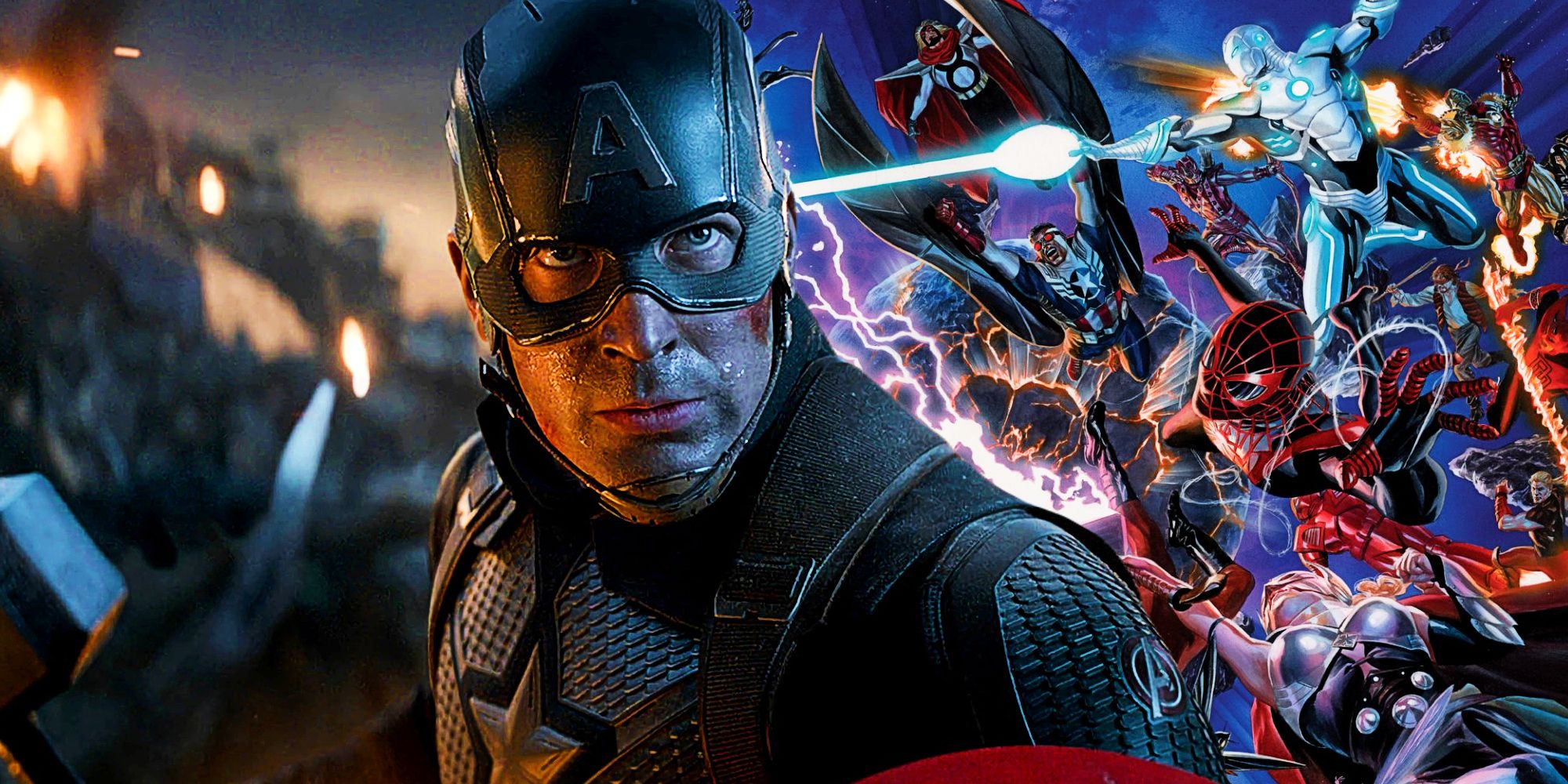WARNING: Spoilers for Doctor Strange in the Multiverse of Madness and Ms. Marvel
As the multiverse becomes the central narrative thrust for the future of the MCU, the franchise is faced with an identity problem as to the correct title of its main universe, especially after recent comments from the star of Ms. Marvel. After first getting a passing mention as an Easter egg in Thor: The Dark World, the MCU’s multiverse was explicitly mentioned by the Ancient One in Doctor Strange: “Who are you in this vast multiverse, Mr. Strange?” Since these brief references, however, the concept of infinite universes has dominated the MCU's Phase 4, receiving special attention in the likes of Loki, Spider-Man: No Way Home, and Doctor Strange in the Multiverse of Madness.
With each film, the multiverse appears to expand a little further. Once a background concept suggesting that there are an infinite number of universes, the multiverse is now capable of drawing characters from prior franchises as heroes jump between possibilities – America Chavez’s Doctor Strange 2 powers being a prime example of this. While this expansive concept allows the possibilities of the MCU to grow ever greater, it begins to complicate where exactly the setting for the franchise’s first three phases sits in all this.
What follows is something of an identity problem for the MCU. The multiverse is promising for the universe’s future, but it does come at the risk of destabilizing all that has come before it – making events such as the Battle of New York and the Blip seem somewhat insignificant when considered alongside the burgeoning size of the universe. Nowhere is this exemplified more clearly than in the MCU’s question of where its main universe lies. Films such as Spider-Man: Far From Home and Doctor Strange in the Multiverse of Madness seem to designate the MCU's universe as that of Earth-616, but this appears to contradict much of the material that has come before it. If the multiverse is to continue to thrive, then the franchise needs to overcome these questions sooner rather than later.
Doctor Strange 2 Established The MCU As Universe-616
Long-serving as nothing more than a franchise theory, Doctor Strange in the Multiverse of Madness confirmed that the main setting of the MCU is Earth-616. This concept first appeared scrawled on Dr. Erik Selvig’s chalkboard during his Tesseract-induced lucidity in Thor: The Dark World, where he seemed to suggest “616 Universe” tied into his visions. It was then explicitly mentioned by Mysterio in Spider-Man: Far From Home, where, in an attempt to appear as if he came from an alternate universe, Quentin Beck labeled the main MCU as “Earth-616.” Thus, when Doctor Strange in the Multiverse of Madness’s Illuminati referred to Stephen Strange’s universe with the same name, it acted as a definitive in-universe explanation of the MCU’s multiversal designation.
If Earth-616 is to be accepted as the official title of the franchise’s main setting, then this places it in the same universe as the main setting in Marvel comics. The comic universe has used the title of Earth-616 since 1983 to differentiate between different branches of its superhero timelines, and the MCU’s universe-setting confirmation implies that the two sources exist simultaneously. This hasn’t yet proven to be an issue for the MCU, but the Marvel comics are built on references, making their shared universe with the MCU a big problem.
Or Is It Earth-199999?
Although the MCU has set its own title, the universe's designation is not that simple. In the Official Handbook of the Marvel Universe A to Z: Vol. 5, the MCU movies and TV shows are established to take place in a different setting altogether from the comics. To avoid confusion, the handbook designates the comic universe under the Earth-616 title, while the MCU is positioned as Earth-199999. Iman Vellani, star of Ms. Marvel, agrees with this degree of separation (via Deadline), pointing to the number of comic book elements and storylines such as the Inhumans and House of M which have never been present in the MCU continuity. Further, according to Vellani, there is no way that Mysterio could have known that the MCU was Earth-616, as he was revealed to be nothing more than an actor with no real knowledge of the multiverse.
As the universe’s identity crisis grows, however, there may be an in-universe explanation for the contrast between the 616/199999 designations. Vellani is correct; even if the MCU is Earth-616, then how would Quentin Beck’s Mysterio have this kind of information with no prior knowledge of the multiverse? The answer may be found in Ms. Marvel episode 1, which confirmed that the events of Avengers: Endgame were made public knowledge via This Powered Life’s podcast episode “Big Me Little Me: A Scott Lang Interview.” Confirming that knowledge of the MCU is spread in-universe through interviews with the heroes themselves, then it stands to reason that information of the multiverse may be spread the same way. Potentially, Selvig gave an interview on his theories or published papers speculating his universe’s whereabouts, which were then read by Beck and passed off as truth. Just because characters who haven’t traveled the multiverse have referenced Earth-616 in the past, this does not negate the reliability of its designation.
Why Does The MCU Have Two Names?
Between the titles of Earth-616 and Earth-199999, the MCU is left with an identity crisis. By placing the comic and cinematic universes in the same continuity, the MCU provides reasoning for why so many of the heroes appear just as they do in the source material; however, with the absence of key characters and events, the plausibility of the two taking place within the same universe loses credibility. These two conflicting arguments threaten the stability of the MCU – if the franchise cannot align its continuity, then which events are the audience expected to have knowledge of in the future?
The simple answer may be accepting the fact that the MCU and the comics have different names for the same items. Just as the MCU’s vibranium has long acted as a substitute for the comic’s adamantium, it could be the case that Earth-616 is simply the cinematic denomination of the official term of Earth-199999. It is certainly true that the former is easier to say than the latter and as a subtle Easter egg to the comics, it makes sense that the MCU would want to use the more concise “Earth-616” title without necessarily implying that this is the same universe as the comics.
In its current navigation of the multiverse, the MCU is in something of a honeymoon period as it attempts to establish where the franchise might take the concept in the future. The series has done well to provide clear explanations of its key concepts in the past, so it may well be the case that a later MCU project provides more clarity on the Earth-616/Earth-199999 debate. This being said, the MCU has always proven strong in its originality away from the comics, meaning that perhaps the universe’s official designation can simply be chalked up as another point of departure.
Proof That The Illuminati Exists In Earth-616








